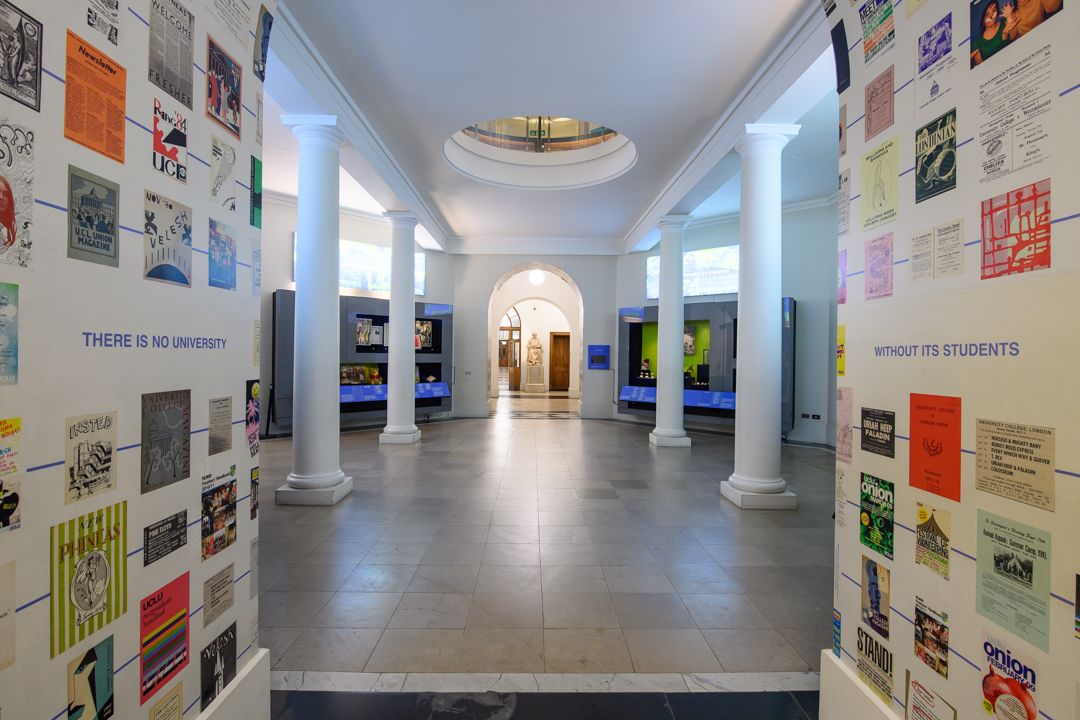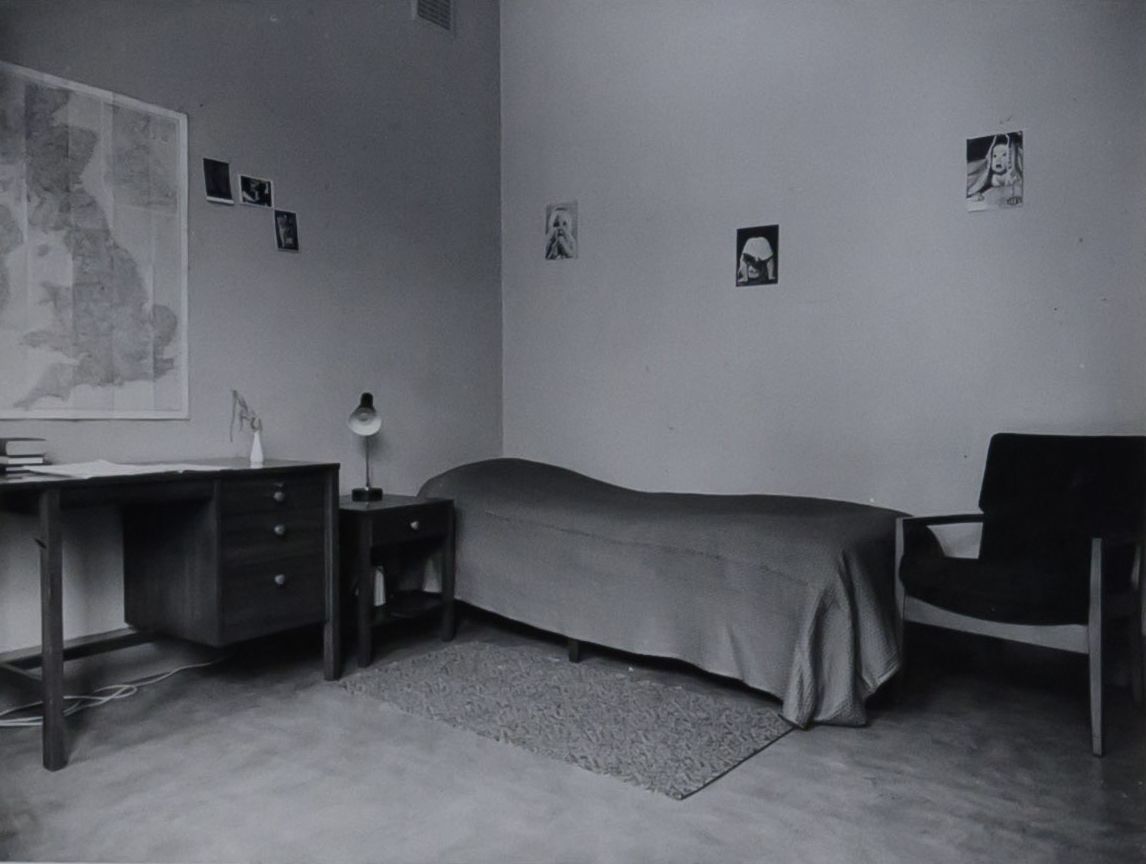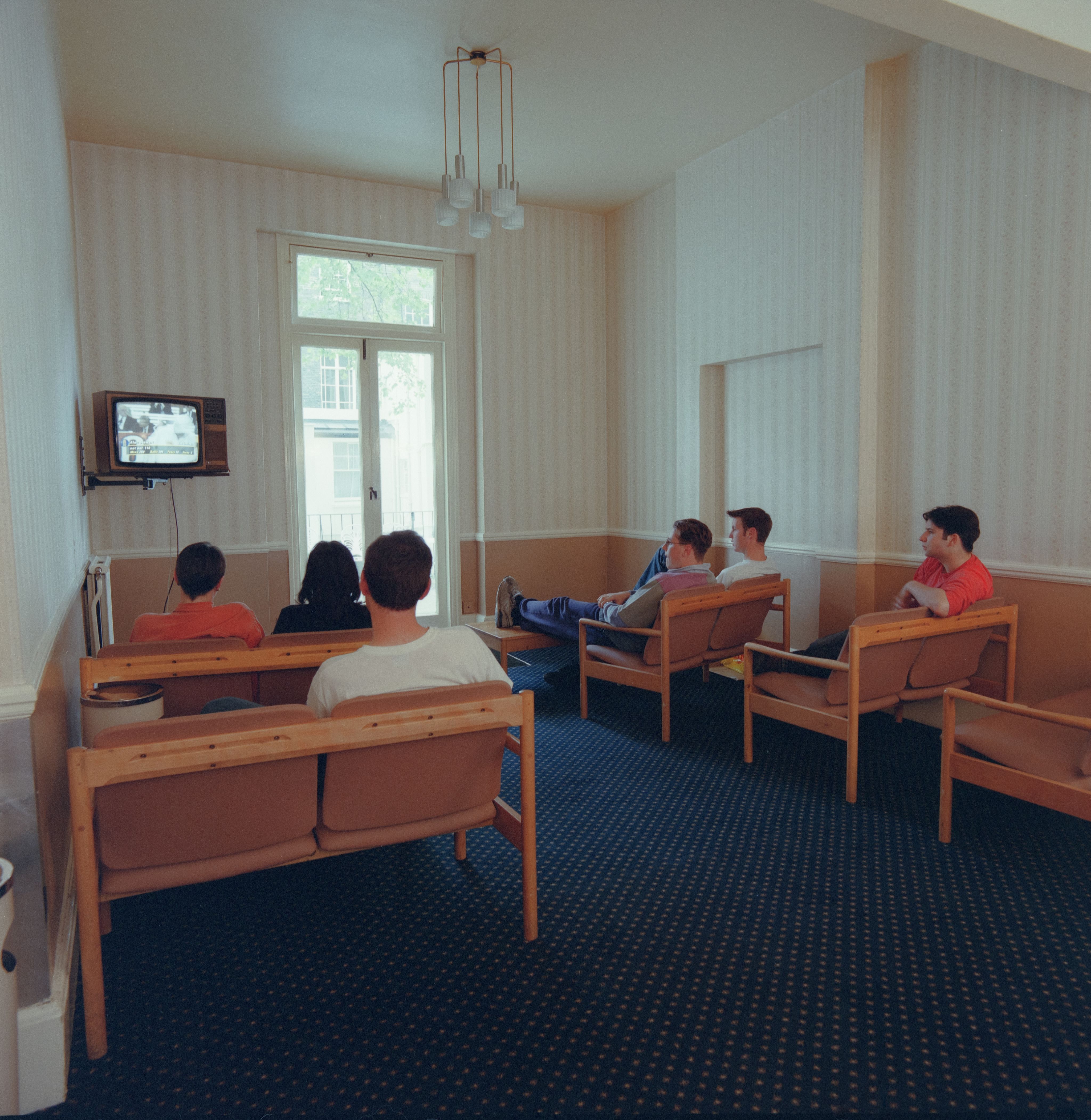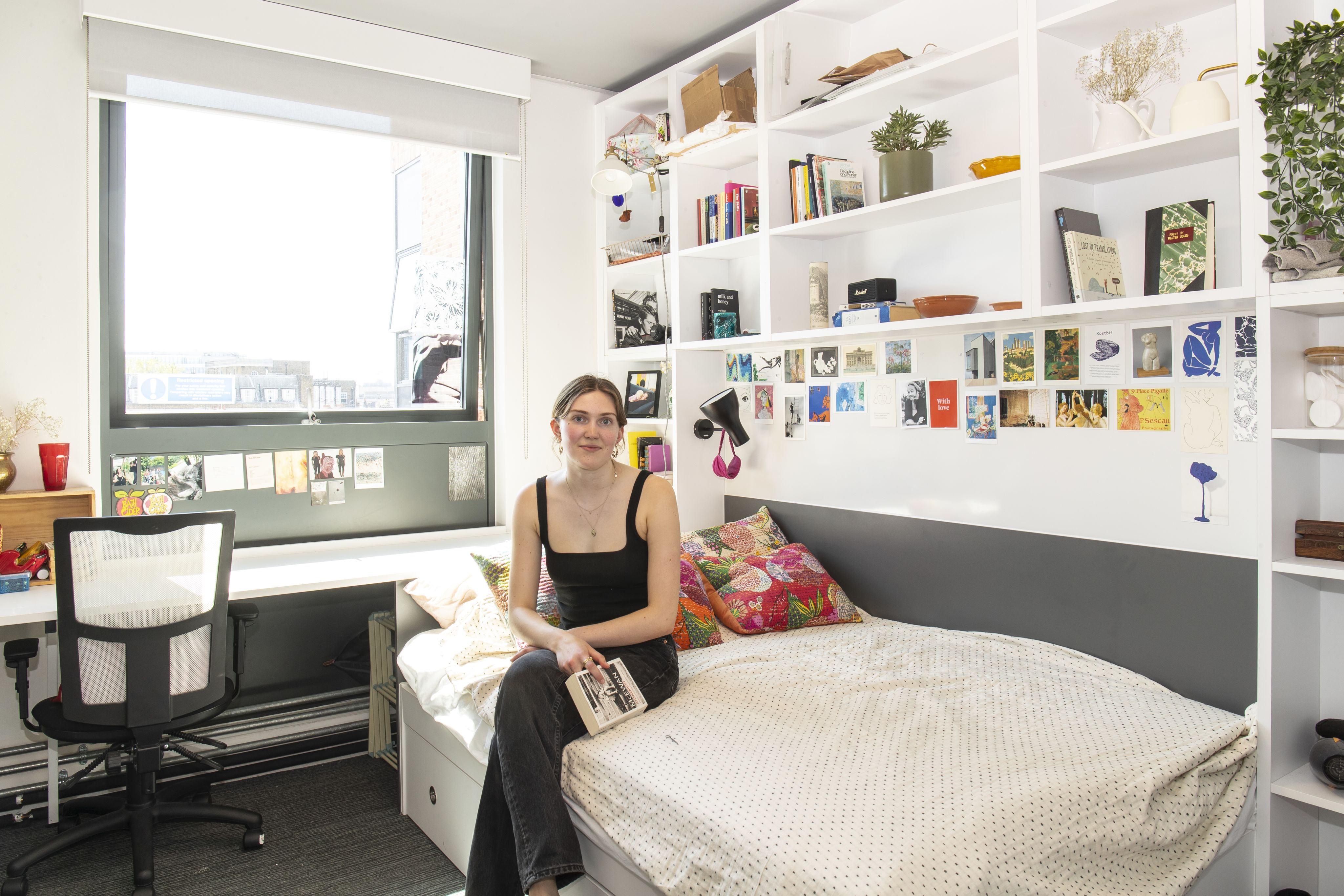Living and learning
UCL has been home to students for almost 200 years - but what has student life looked like throughout the decades? Professor Georgina Brewis takes us into the rooms of students from the 1880s to the present day.

In the 1820s, London was the largest city in the world, but it had no university. So, those first arrivals at the self-styled University of London (known as UCL from 1836) invented what it meant to be a university student in London. Previous historians of UCL have suggested that it is simply too difficult to reconstruct student life from this early period. My research is proving them wrong.
"There is no university without its students" is the concept that lies at the heart of the new exhibition Generation UCL: 200 Years of Student Life in London, which is open in UCL’s Octagon Gallery until 8 December 2024. The exhibition forms the first major output of a wider research and engagement project that I am directing in the run-up to UCL’s bicentennial celebrations taking place in 2026. I suggest that we might see the first students – who arrived at an unfinished campus on the edge of London in October 1828 – as the real ‘founders’ of UCL.
"Previous historians of UCL have suggested that it is simply too difficult to reconstruct student life from this early period. My research is proving them wrong."
A completely new type of student
UCL provided a stimulating environment for a completely new type of university student in the early-to-mid-nineteenth century. Students in London came from far more modest homes than their peers at the universities of Oxford or Cambridge and represented all religious backgrounds, including Jews, Roman Catholics, Quakers, Methodists, Baptists and others who were barred from the ancient universities. From the start UCL attracted international students, and less than twenty years after opening was celebrating the arrival of the first Indian students.
"UCL provided a stimulating environment for a completely new type of university student."
I have been researching who these first students were – where they lived, what they ate and drank, where they studied and socialised, what they wore, and where they shopped. Under only limited supervision from the university, UCL students had unparalleled opportunities to invent their own traditions. The exhibition showcases UCL’s rich collections of archive material and objects covering student life, including new acquisitions of clothing, memorabilia and scrapbooks that were loaned or donated by alumni. I wanted to spotlight individual stories while also exploring the collective activities of students over time – so each case includes record cards or images of real students drawn from across two centuries.
College Hall accommodation in the 1880s. Credit: College Hall Archive, Senate House Library
College Hall accommodation in the 1880s. Credit: College Hall Archive, Senate House Library
A UCL student room in the 1990s. Credit: Mary Hinkley, UCL Educational Media
A UCL student room in the 1990s. Credit: Mary Hinkley, UCL Educational Media
Campbell House, 2023. Image: Mary Hinkley, UCL Educational Media
Campbell House, 2023. Image: Mary Hinkley, UCL Educational Media
Campbell House in the 1960s, Credit: UCL Special Collections
Campbell House in the 1960s, Credit: UCL Special Collections
Astor College, 2023. Credit: Mary Hinkley, UCL Educational Media
Astor College, 2023. Credit: Mary Hinkley, UCL Educational Media
Astor College, 1990s. Credit: Mary Hinkley, UCL Educational Media
Astor College, 1990s. Credit: Mary Hinkley, UCL Educational Media
College Hall in the 1880s. Credit: College Hall Archive, Senate House Library
College Hall in the 1880s. Credit: College Hall Archive, Senate House Library
Campbell House in the 1960s, Credit: UCL Special Collections
Campbell House in the 1960s, Credit: UCL Special Collections
Campbell House in the 1990s. Credit: Mary Hinkley, UCL Educational Media
Campbell House in the 1990s. Credit: Mary Hinkley, UCL Educational Media
Making a home
One case called Making a home features photographs of student bedrooms and communal spaces in halls of residence across four different decades: the 1880s, 1960s, 1990s and 2020s.
Images of student residences can provide a fascinating insight into changing student priorities, gender relations on campus as well as trends in interior design. The décor shown in photographs of College Hall, the first hall of residence for women opened in 1882, projects a respectable, middle-class femininity designed to reassure those uncertain about the novelty of women’s higher education. The "prettily furnished" rooms of College Hall were even featured in contemporary newspapers such as The Graphic.
"Images of student residences can provide a fascinating insight into changing student priorities."
The mid-century rooms we feature appear sparse and even austere when compared to either the earlier or later images. The early 1990s bedrooms reflect the changing technology available to students such as hi-fi systems and portable televisions as well as highlight the significance of pop culture artefacts such as the stuffed Gremlin toy or troll doll. Note that it was considered too intimate in the 1880s to show a student’s bed, but the more recent students were happy to be photographed sitting or lying on theirs.
To complement historic images in UCL’s archives, I commissioned a new photoshoot of first-year undergraduate rooms in summer 2023. We chose to revisit Astor College and Campbell House, as these were the residences that we had earlier photographs of. College Hall still exists as a mixed, inter-collegiate hall of the University of London but is no longer in its original Byng Place building.
While we had advertised the opportunity to students by email ahead of time, we didn’t have many responses, so I simply turned up with UCL photographer Mary Hinkley on a warm day in June 2023 and began knocking on students’ doors! Fortunately, we found several students willing to tolerate this strange professor asking to take photographs of them in their rooms (the gift voucher as a thank you might have helped with this).
Coincidently, one student we met in Astor College, Iona Coles, had actually studied my module on the history of UCL and so it was fun to reconnect and for her to become part of UCL’s archive. By the 2020s, mobile phones and laptops are the necessary learning tools of the student, though books, plants, pictures and cuddly toys are still used to personalise their space. The images of the shared kitchens with pizza boxes and vodka bottles are a sharp contrast to the formal dining rooms of previous generations.
"Having the photograph of my first-year student room on display as part of the exhibition makes me feel more connected and really part of UCL. It’s been fun to take my friends to see it when they come to visit me in London. I also like the idea that the image will go into the UCL archive along with pictures of student rooms from different periods, and could be studied by people in a hundred years, when UCL is celebrating its tricentenary! "
- Iona Coles, a second-year BA Education Studies Student, whose photograph features in the exhibition.
Iona Coles in her Astor College room, summer 2023. Credit: Mary Hinkley, UCL Educational Media
Iona Coles in her Astor College room, summer 2023. Credit: Mary Hinkley, UCL Educational Media
Reflecting the diversity of student life over 200 years
A key challenge of the exhibition was to represent this diversity of student life over two centuries. I wanted to ensure we covered the full two hundred years, choosing objects such as one of the first handwritten student newspapers, the London University Examiner from 1833, alongside a copy of The Cheese Grater published in 2022. We include a portrait of John Forster, a law student who joined UCL in 1829, as well as first year undergraduates photographed in 2023. We feature 1930s anti-war and anti-fascist posters made by artists from the Slade School of Fine Art that can be contrasted with a scrapbook produced by students protesting the Iraq War in 2003.
The exhibition also explores the formation of Students’ Union UCL, founded in 1893 and now one of the largest student-led organisations in the world. But UCL students also played important roles in building a wider student movement in Britain, helping found organisations including the National Union of Students, the West African Students’ Union and the Central Union of Chinese Students. It was important to include images of these diverse students and identify sources relating to their stories.
We also do this through oral history. The exhibition features short recorded or voiced-up accounts from alumni reflecting on key moments of their time at UCL, including on the separate spaces for men and women that prevailed on the campus in the late nineteenth century; the experience of studying at UCL after the bomb damage of the Second World War, and the founding of the UK’s first ‘GaySoc’ in 1972. You can listen to these online.
Through our research, and the exhibition, we're encouraging people to think critically about UCL’s history in the run-up to its bicentenary in 2026 – and the key role played by students in that remarkable story.
Georgina Brewis is Professor of Social History at IOE, UCL's Faculty of Education and Society.

Generation UCL: 200 Years of Student Life in London was curated by Professor Georgina Brewis and Dr Sam Blaxland (IOE, UCL’s Faculty of Education and Society) alongside Leah Johnston and Colin Penman (UCL Special Collections).
Located in the Octagon Gallery in UCL’s Wilkins Building, it is free and open to all until 8 December 2024.
Do you have photographs of your student room? Do you have objects or items you want to donate to UCL’s archive? Would you like to be interviewed by the project team? Contact Professor Georgina Brewis by emailing g.brewis@ucl.ac.uk or complete our expression of interest form.

Portico magazine features stories for and from the UCL community. If you have a story to tell or feedback to share, contact advancement@ucl.ac.uk















